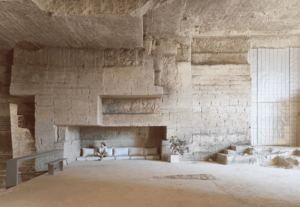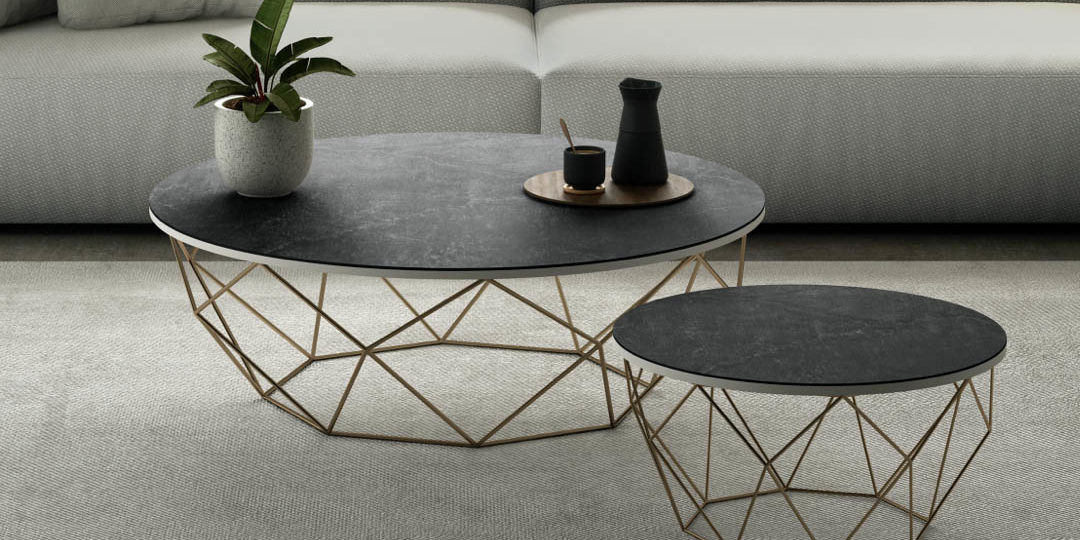“Design gets close to the mountain”. Rock surfaces
The Silestone Institute presents the latest trends in design with materials and textures that bring us closer to the rocks of the mountains.
We embrace the earth and the magnetic power of rocks, their weight, density, color and texture accompany designers today in the design of the interiors of spaces and the elements that surround them, pieces of mountains that make up a new coexistence.
We need nature all around us, very close to every action and movement of everyday life, spaces with a strong environmental impact. The influence of natural stone, its effect of grandeur, the weight of gravity that attracts us to the earth and its roots.
Rocks, stones, minerals, raw, geology taking the forms of design to integrate into our immediate environment, we need to touch and feel the distant coldness of a stony texture at our fingertips, the rougher, less worked and polished, the more emotion.
“This natural impulse has made an impression on some architects, interior and furniture designers who, beyond the trends, recreate a primitive world adapted to the new conditions of comfort. The visual effect is striking” explains Marisa Santamaría, researcher and disseminator of global design trends.
- Rocks set in furniture
Like unworked gemstones, rocks dot the surroundings of the new interiors. Touching and feeling the natural, polished by nature itself brings the sensation of being in connection with earth, a communion that is interspersed with other essential forms.
An exploration of the relationship between nature, objects and humans, identifying the essence of the material to create a form with a refined and subtle language.
Rocks from Seoul, Sissan Lee
Seoul-based designer and artist Sisan Lee combines primitive forms with materials such as steel in the collection “Proportions of Stone”.
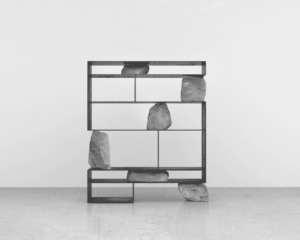
Heavy stones by Lucas Muñoz, from Eindhoven
Lucas Muñoz studies the balance and harmony that exists between the elements intervened by man and nature.
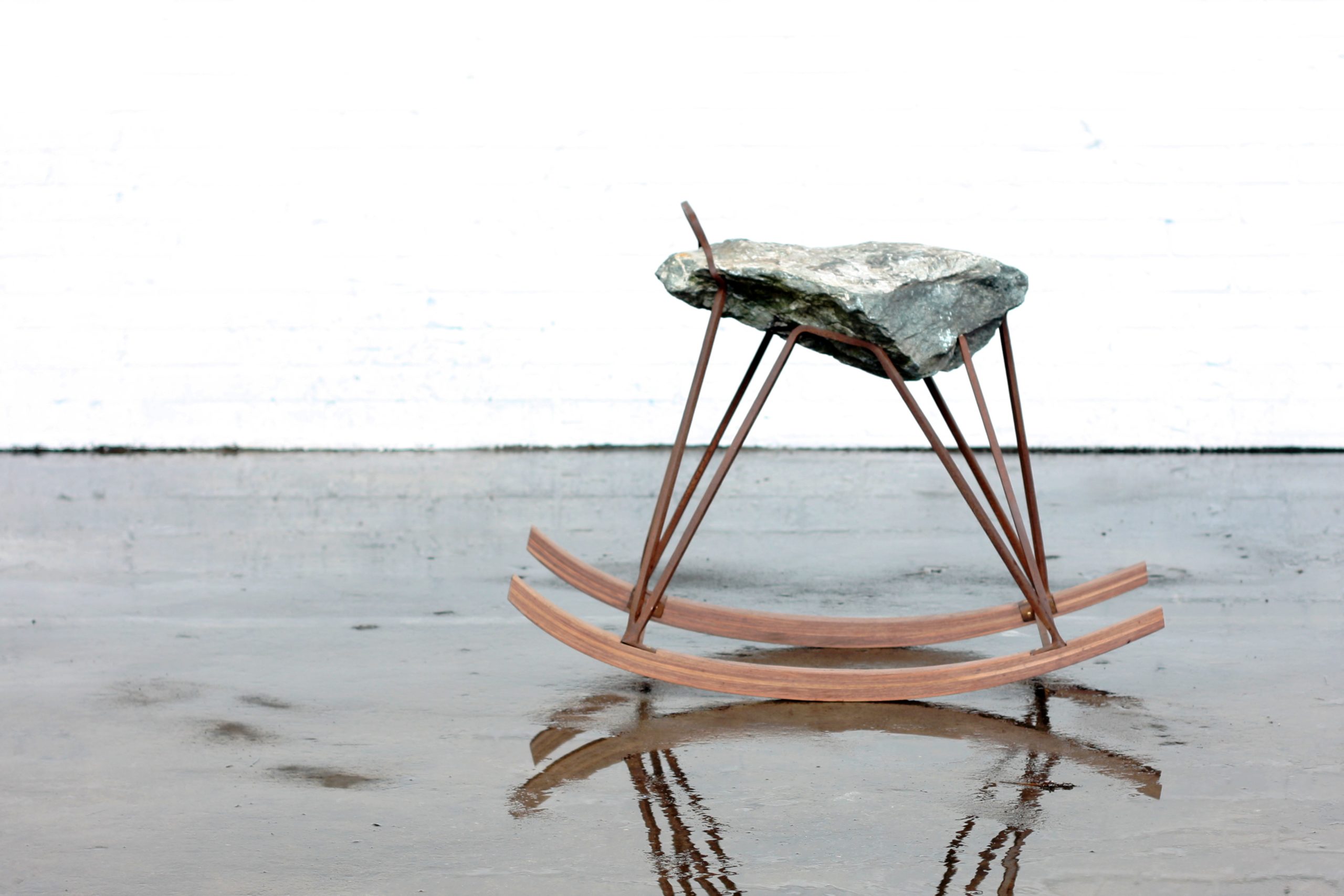
Pedruscos from New York, Chen Chen and Kai Williams
The duo Chen Chen and Jai Williams are known for their eclectic vision of design, with unconventional materials, their handcrafted production makes their pieces unique and singular works.
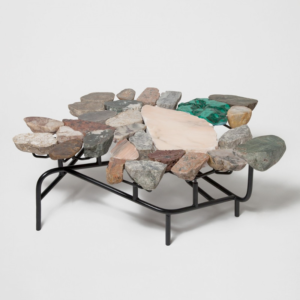
2. The mountain at home
The inspiration comes from the “brutalism” with very unique naturalistic dyes, the result is almost surreal. The essential, the stony sensation of natural stone surfaces, play with neutral and raw colors in the surrounding environment.
The unpolished elements, implement earthy environments, always serene and evocative. The visual and sensory impact is guaranteed, especially when the light, well modulated, falls on the details of each rocky fold.
Mountains from London, Charlotte Taylor
Classicism and deconstruction in the same interior designs, dreamlike atmospheres that mark the continued identity of this designer who is working all over the world.
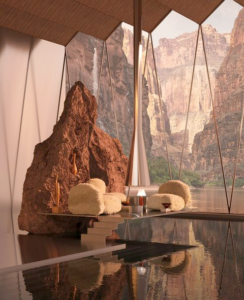
The rocky skin, Dekton
The sensation of being surrounded by nature and feeling part of it, in our homes, in the offices in constant transformation or in the most advanced hotels, is not only determined by the interaction with the plant world, the surfaces with motifs related to the most diverse orography, converge in the approach to a new sensoriality. A game of the senses that leads us to not distinguish reality from a very well represented stone fiction. Dekton shows the harmony and visual balance of the textures and shapes of stone with the utmost naturalness.
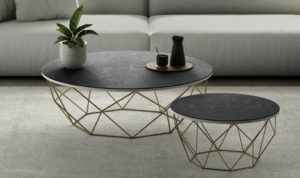
3. Cave architecture.
Houses in new contemporary caves designed to generate new emotions and experiences.
The vernacular tradition of each environment prevails in the development of this architecture, rescued from ancestral vestiges. Spaces excavated in the bowels of the earth that reinvent the ways of living of the 21st century. The basis is found in a reading of the surfaces, each fold of the structure of the grotto is taken as a possible derivation of a function. The design is naturally integrated into every nook and cranny of the cavern.
Casa Terra en Menorca, Ensamble Estudio
Architects turned speleologists, this is the work of the Ensamble Estudio studio, in an old stone quarry in Marés.
